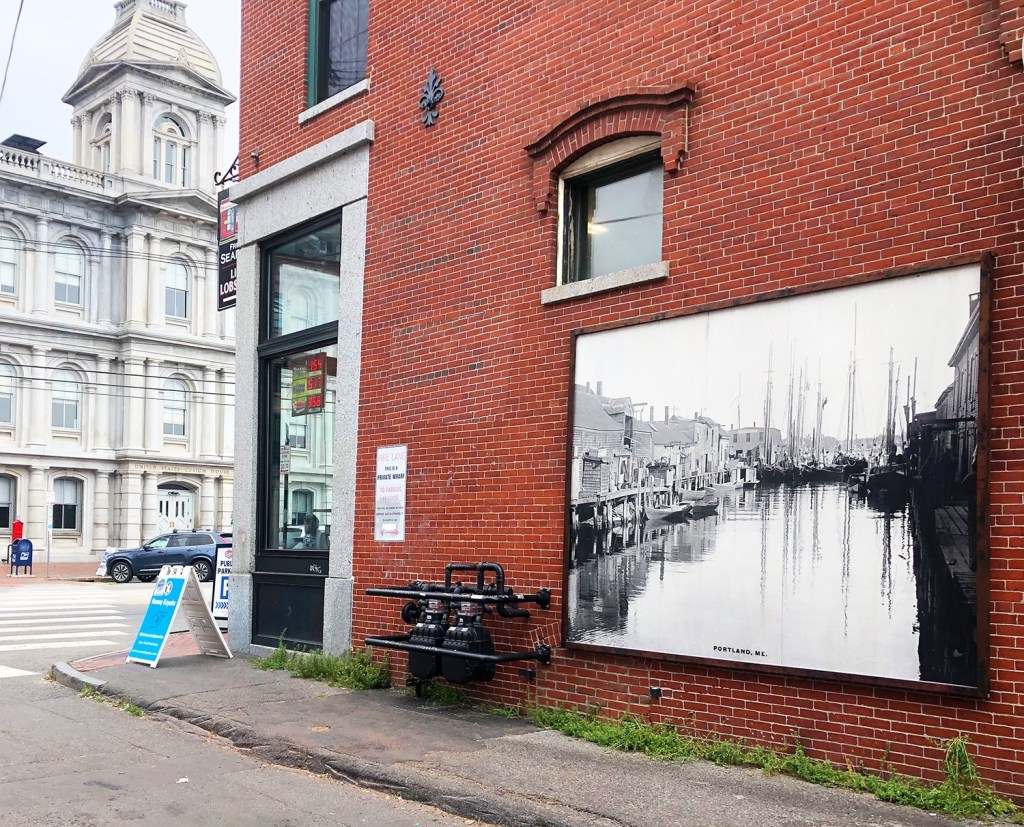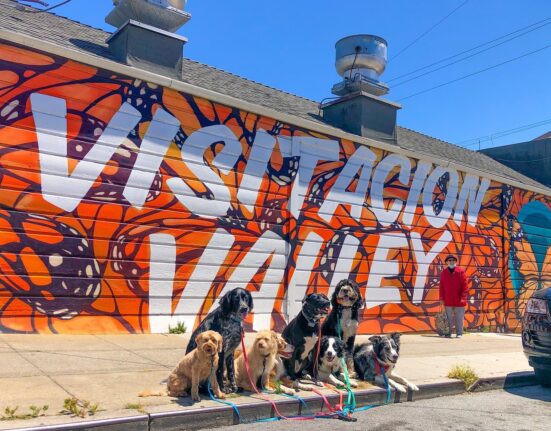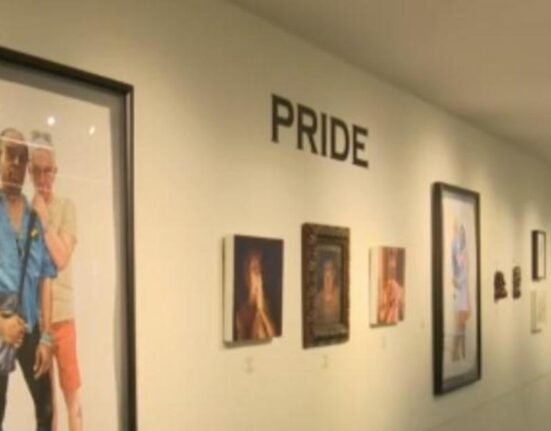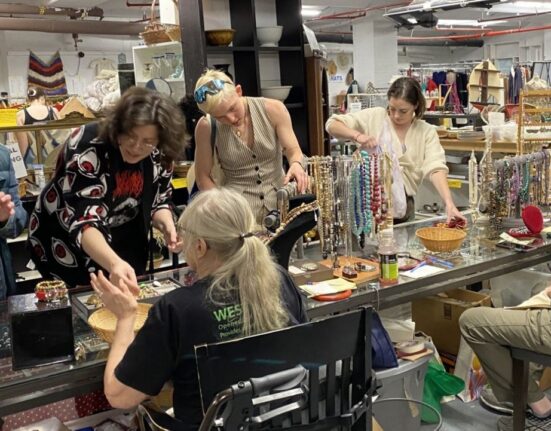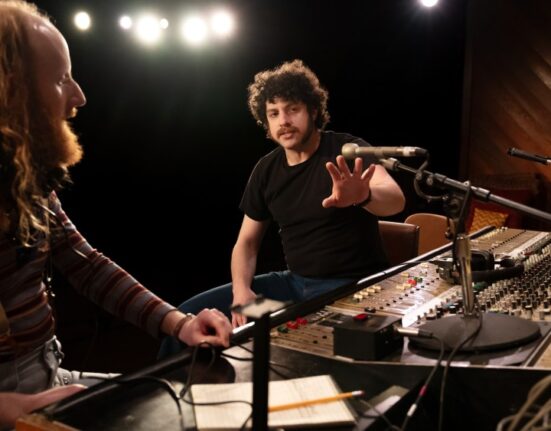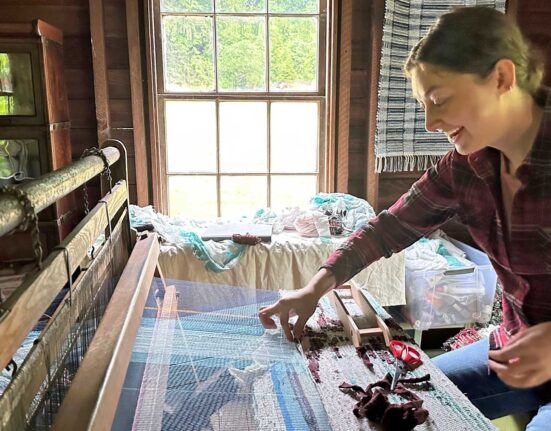

Timothy Goldkin of Ramble More Design created this installation of an early 1900s image of Custom House Wharf. Photo by Timothy Goldkin
Portland native Timothy Goldkin, 35, is an artist with a background in printmaking and alternative photographic practices and the founder of Ramble More Design. He often uses archival images to create large-scale pieces using cyanotype and wheat-paste processes. He often works in private spaces and on commissions and has made pieces for local restaurants and bars, such as Twelve, Low Stakes, Another Round and Root Wild Kombucha.
Recently, Goldkin installed an 8-by-10-foot mural on the side of Casco Variety at the corner of Custom House Wharf and Commercial Street – a large reproduction of a historic photo taken just around the corner at the turn of the 20th century. The piece was funded by a grant from the Maine Arts Commission and sponsorships. He answered five questions about this foray into public art. This interview has been edited for length.
You described your work as “at the intersection of art and history.” What brought you here?
I’ve always just had a natural interest in history because I’m interested in stories, period. Then, history is this grand story of where we all come from, and obviously it’s innately flawed and subjective, even though we try to put it into some objective framework, which is super problematic often. But a photograph is a real moment. It is an actual moment of something that was. I’ve always had an intrigue and an interest there. Maybe that innate interest is a reaction to this other reaction to the world that we live in today, which is absolutely dominated by synthetic materials and screens and avatars and digital augmentations of ourselves and the world around us. These photographs just bring me personally back to a time when it seems like folks were a little more grounded, you know? You’re either talking to the person next to you or reading a book, maybe.
There’s this rapid evolutionary nature that we’re experiencing because of our technology basically that I don’t know that we as creatures are super adapted to. There’s something calming and grounding in some of these older photographs.
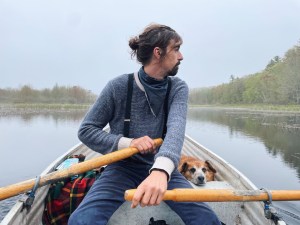

Timothy Goldkin. Photo by Noel Walker
How did this particular project come to be?
I kind of just dreamed it into being. I’ve known of this photograph. I’ve actually worked with this photograph in the past, and it has always captivated me. This wall is also a wall that I’ve known of for a long time. I’ve been going to Casco Variety since I was like 19 years old.
You mentioned that you were familiar with this image. Can you share a little bit about where the image came from and what interested you about it?
The image itself is in the holdings of the Library of Congress. It is in the public domain. There was this company called the Detroit Photographic Company that traveled around the U.S. in the turn of the 20th century, the late 1800s and early 1900s, photographing all these cities and spaces within those cities.
They did all these glass plate negatives, 8-by-10-inch glass plate negatives. And they’re really beautifully shot, and they’re really high resolution. It’s the type of thing where I can blow it up to 8-by-10-feet, and it still holds its fidelity. The photograph itself was taken right in between Custom House Wharf and Portland Pier looking at the waterway in the center of the wharfs on either side.
There’s like 15 coats of varnish on it to protect it from the weather. It’s innately a temporary art piece. It’s there for a year, potentially two but probably one, and it will weather, and it will degrade. And so maybe there’s like a meta kind of message.
Being able to create it at 8-by-10-feet, to actually make this, like, life-size, is to create a window to the past for people to be transported.
You want to pursue more public art projects. What interests you about that?
Many reasons. The first and most important being that public art has this power to transcend the normal barriers that come between people, your quote-unquote average person and art. Art can feel inaccessible to people. I’ve felt that art is inaccessible, and I’m an artist. Busting through the barriers of that and being something that anybody can walk up to and interact with and have this moment, it’s so much more egalitarian.
The working waterfront as depicted in this image is different from the working waterfront in Portland today, and the future of the working waterfront is certainly a major conversation in Maine. Was that on your mind as you were making the piece?
It definitely was on my mind in the creation of this piece. Forefront, I would say. It’s meant to give a moment of pause and of recognition and of reverence. We’re a foodie city these days. People come here for the food. Where does the food come from? We’re a seafood city, and it comes mostly from the water. Visitors and tourists, their vote here is with their dollar. What they buy, where they shop, that’s their impact, right? Just remembering that we’re a port city is a good thing to remind them off.
I was part of that referendum called “Save the Working Waterfront” right before COVID. We got two years of a moratorium of any non-marine development on the water side of Commercial Street. I think it’s about reminding locals too where we live – not just in Portland, but the rest of Maine as well. Office spaces – and again, I would love to make work for office spaces and have them pay me and make their office spaces beautiful – but offices can go in different places.
Fishermen, cargo shipping, charter sailboats, liveaboards, charter fishing vessels, tugboats – these things need to be right where the water meets the land in order to exist. I’m just trying to advocate for our waterfront continuing to be a waterfront.

